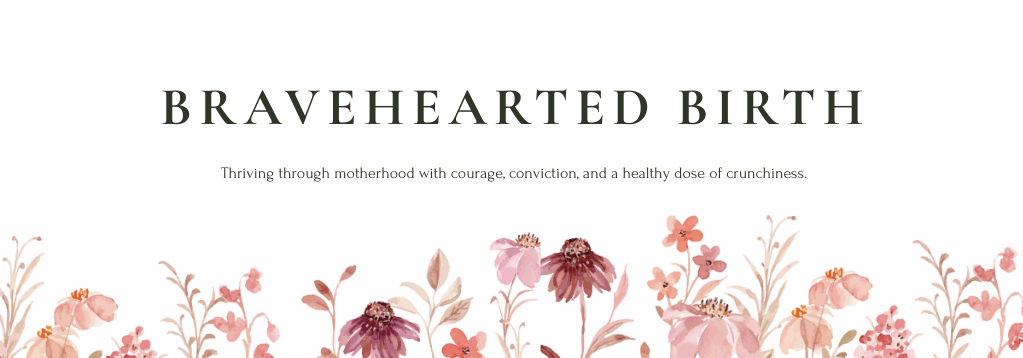One of the most common questions I get it, “What is the GBS test, and what does it mean?” Let’s dig in!

What is GBS?
Group beta strep, or GBS as it’s often called, is a type of bacteria that naturally occurs in the intestines. This bacteria can sometimes migrate to the anal and genital area of both men and women. It doesn’t usually cause any problems in healthy adults.
To my first-time moms who have tested positive for GBS and have turned to the Internet so that you don’t have to ask your mom or your friends about this: it’s 100% normal.
It isn’t an STI, and it isn’t something that is caused by poor hygeine. There’s no shame in it. 🙂 As a healthcare professional, I can promise that no one is judging you at your OB’s office for testing GBS positive.
However, GBS occasionally can cause a problem if your baby is exposed to the bacteria during vaginal delivery, and develops an infection from it.

The GBS Test: American Standard, but Famously Controversial
In the US, your OB will probably test for GBS at your 36 week appointment. It’s a simple procedure, and your OB may let you swab yourself. You’ll be handed what looks like a large q-tip, and the physician will ask you to brush in a specific pattern on the skin around the anus and perineum.
The test will be sent off to the lab, and you’ll get a positive (GBS detected) or negative (no GBS detected) result, usually within 2-3 days. If the test is negative, no further steps are taken. If the test is positive, your medical team will plan to give IV antibiotics while you’re in labor. This is to prevent the bacteria from getting passed on to baby during a vaginal delivery.
In other countries, such as the UK, medical professionals routinely skip the 36-week test, but will opt to give antibiotics in labor if the mother has risk factors for GBS infection. (This approach does see more cases of infant GBS; in 2020, the UK saw just over twice as many infant GBS cases as the US).
Here’s the kicker: because the levels of this bacteria fluctuate in our intestines, we may or may not have GBS present on the skin and vaginal opening at any given time. So the goal of the 36-week test is to try to predict if you will have GBS on your skin and in your vagina at the time of birth.
Ideally, medical professionals would be able to test during labor. But since the lab test takes about 48 hours to result, if doctors were to test for GBS during labor, most women (thankfully) would deliver their babies before the test results would come back. In about 80%-90% of pregnant women, GBS test results at 36 weeks are unchanged by the time the mom goes into labor. So it’s (somewhat) accurate-ish.

Is GBS Dangerous for Babies? Looking at the Stats
The answer is yes, it can be dangerous. I’m going to spit out some numbers to help put this into perspective.
About 25% of moms test positive for GBS at 36 weeks. That just means at the time of the test, some bacteria from the GI tract has migrated to the skin around the vagina and anus.
In pregnancies where mothers test positive for GBS and are not treated with antibiotics, their babies have a 1-2% chance of developing early GBS infection.
For 4% of GBS-infected babies, the infection will be fatal.
75% of babies who do get infected with GBS show signs of infection within 7 days after birth. Late-onset GBS infection is much less common, and when it does occur, it’s also less likely to be fatal.
Treatment prevents most cases of GBS; medical professionals estimate that antibiotic treatment prevents about 90% of cases. If you are GBS positive, that means that antibiotics reduce the risk of baby contracting an infection by 83%.
So, to recap, for a GBS-positive mom, if she chooses to forgo antibiotics, or isn’t able to get them before her baby is born, her baby has a 1%-2% chance of getting a GBS infection. If that GBS-positive mom does get antibiotics during labor, that baby’s chance of getting an infection goes down by another 84%. So that’s a 16% of a 1%-2% chance that your baby will have to fight a GBS infection. And remember, 96% of GBS cases are non-fatal.
Antibiotic Treatment During Labor
Unless you have a penicillin allergy, your provider will probably prescibe penicillin during labor. Penicillin causes a quick, temporary drop in the quantity of GBS bacteria present in your vagina and skin, so it helps to keep baby from getting enough GBS to cause an infection. Ideally, doctors try to give IV antibiotics about 4 hours before delivery.

Risks of Antibiotic Treatment During Labor
While penicillin is almost always successful in fighting GBS, it does kill off beneficial bacteria as well. This can damage a baby’s microbiome, or the community of good bacteria that help with digestion and immunity.
Several studies have looked at the effects of IV antibiotics during labor on babies. Almost all of these studies have concluded that IV antibiotics do have a temporary negative effect on the child’s microbiome. However, most of them estimate that the baby’s microbiome usually recovers by the baby’s first birthday.
One study also noted that three things seemed to significantly damage a baby’s microbiome health. These factors were antibiotics during labor, cesarian delivery, and not breastfeeding. So the research suggests that if child did have antibiotics during labor, vaginal delivery and breastfeeding longer could help to rebuild the microbiome more quickly.
Summing It Up
Okay, that was a lot! Thanks for sticking with me. 🙂
I hope this offers clarity and a more balanced approach to the GBS topic! Looking forward to hearing from you in the comments!
Lynette
